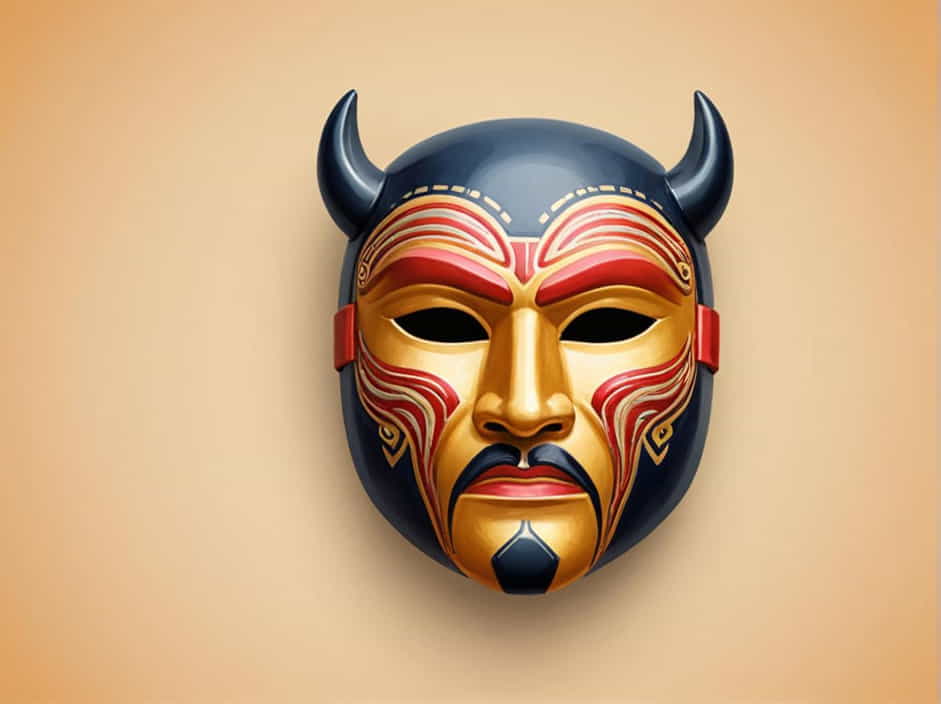The Kwakiutl people, an Indigenous group from the Pacific Northwest Coast of North America, have a rich cultural heritage deeply connected to their artistic traditions. Among their most striking cultural artifacts are their ceremonial masks. These masks are not just decorative objects but play a vital role in storytelling, rituals, and social hierarchy. This topic explores the significance of Kwakiutl masks, their role in ceremonies, and their lasting impact on Indigenous identity.
The Cultural Importance of Kwakiutl Masks
Kwakiutl masks are intricately designed pieces of art, often carved from cedar wood and painted with vibrant colors. They are used in a variety of ceremonies, including potlatches, initiation rites, and spirit dances. Each mask represents a specific character, animal spirit, or ancestral figure, making them a crucial element in preserving oral traditions and cultural narratives.
Symbolism and Meaning
Kwakiutl masks often depict supernatural beings, animals, or ancestors. Some common representations include:
- Raven Mask – The trickster figure in Kwakiutl mythology, symbolizing transformation and creation.
- Wolf Mask – Representing strength, loyalty, and the connection between humans and nature.
- Thunderbird Mask – A powerful supernatural being associated with storms and spiritual guidance.
- Hamatsa Cannibal Spirit Mask – Used in initiation ceremonies to symbolize the struggle between civilization and primal instincts.
Each mask tells a story, embodying the beliefs and traditions passed down through generations.
Role in Kwakiutl Ceremonies
Kwakiutl masks are central to many traditional ceremonies. These events serve not only as religious and spiritual gatherings but also as social functions that reinforce community bonds and cultural identity.
Potlatch Ceremonies
The potlatch is one of the most significant ceremonies among the Kwakiutl. It is a grand feast where wealth and status are displayed through gift-giving, dance, and storytelling. During these events, masks are worn by dancers who act out stories of ancestral spirits and mythical beings. The use of masks in potlatches reinforces family lineage, social status, and spiritual connections.
Initiation Rituals
In Kwakiutl society, young men undergo initiation rites to mark their transition into adulthood. These rites often involve the Hamatsa ceremony, where initiates wear elaborate masks representing cannibal spirits. The ritual symbolizes purification, self-control, and acceptance into the tribe’s secret societies.
Healing and Spiritual Practices
Some masks are believed to have healing powers and are used by shamans in spiritual ceremonies. These masks help mediate between the human and spirit worlds, providing guidance, protection, and healing to individuals and the community.
Artistic Techniques and Construction
Materials Used
Kwakiutl masks are traditionally made from red cedar, a durable and sacred wood. Artists carve intricate details and paint the masks using natural pigments like ochre, charcoal, and plant-based dyes.
Movable Features
Some masks have moving parts, allowing the wearer to animate expressions or reveal hidden faces. These designs add to the dramatic effect during performances, making the masks appear lifelike.
Influence on Modern Art
Kwakiutl masks have inspired many contemporary artists and have been displayed in museums worldwide. Their intricate craftsmanship and deep cultural meanings continue to influence Indigenous and non-Indigenous art movements.
The Impact of Colonization on Kwakiutl Masks
During the late 19th and early 20th centuries, the Canadian government and Christian missionaries attempted to suppress Kwakiutl traditions, including the potlatch ceremony. Many masks were confiscated or sold to collectors, leading to a loss of cultural heritage.
However, in recent decades, there has been a revival of Kwakiutl art and traditions. Indigenous artists and cultural leaders have worked to reclaim and preserve their heritage by creating new masks and educating younger generations about their significance.
Kwakiutl masks are more than just artistic creations—they are symbols of identity, spirituality, and history. Through their use in ceremonies, storytelling, and artistic expression, these masks continue to play a crucial role in preserving Kwakiutl culture. Despite historical challenges, the resilience of the Kwakiutl people ensures that their traditions will live on for future generations.
